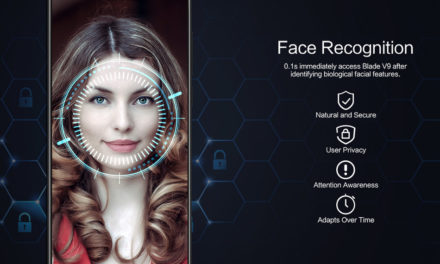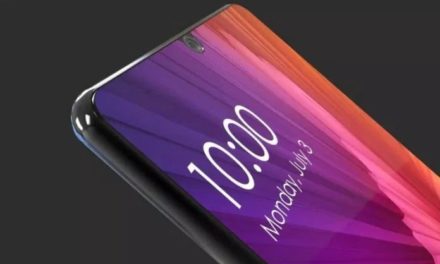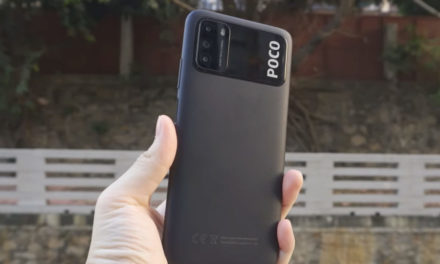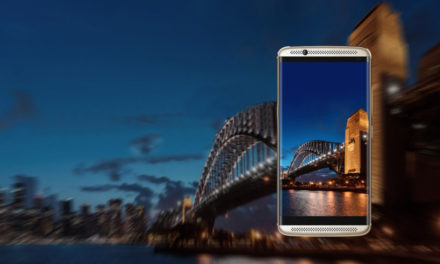
What kind of phone do I want for myself? - Introducing the UMIDIGI Z2 Pro
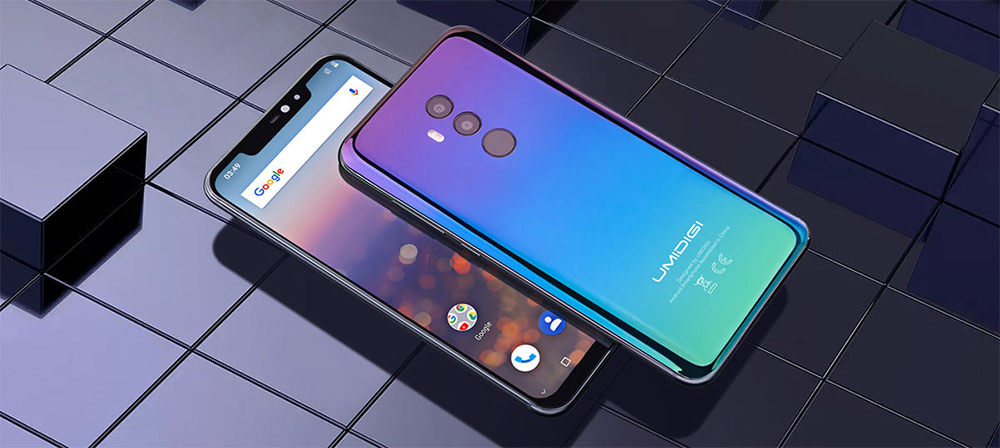
That's exactly what, a powerful processor, lots of memory and a beautiful exterior at surprisingly low prices.

contents show
Introductory
At this year's World Mobile Congress, it was clear to everyone that the resolution of the iPhone hated by many, many loved, sharing fans, the peninsula in the upper part of the screen, notch became a quasi-standard. There was no such thing as a company that did not announce such a phone, and now we do not only think about smaller manufacturers, but big names like Xiaomi, ASUS or Oppo.
Of course, the emerging Chinese producers could not be left out, but in many cases they had hidden the good outside weak interior. It was not uncommon for the big-screen phones to have a terribly low HD resolution, and neither the processor nor the amount of memory was enough to be interpreted as a serious device. There was, however, another group of manufacturers who decided to use their new device to launch a new display design to break larger slots on the market. The plan in this case was clearly to produce an unusually strong phone from the company, of course at the lowest possible price. This was also the case for UMIDIGI, who wanted to win their Z2 Pro phone. The information so far, the phone's specification, and the surprisingly bizarre outside suggest that they have every chance of doing so.
Processor, graphic accelerator and neural accelerator in the central unit
We always use the central unit to showcase phones, and in this case, this is of particular importance. In the UMIDIGI Z2 Pro is a tile, MediaTek P60 (MT6771), which is extremely fresh, extremely modern and of course quite fast. MediaTek announced this spring in its new production line at the TSMC factory for 12 nanometer strips, and the UMIDIGI Z2 Pro is the first phone that we can meet with. Helio P60 targets the upper third of the middle category and is one of the strongest solutions in MediaTek. According to the data of the harvester, it is possible to exceed Helio P70 at speeds of up to 30, and its consumption is lower than the P23 in the lower pots. The strength of MediaTek P60 is demonstrated by the fact that the manufacturer thinks it will be a worthy competitor for the Snapdragon 630 and 636 pads.
The chip uses a processor based on “traditional” ARM cores. The eight cores are, as we are accustomed to, divided into two clusters, one sharpened for low power consumption and the other for high power. The interesting thing about the processor is that, unlike usual, each of the cores can scale up to 2 GHz as a function of performance. However, these seeds arranged in clusters are not the same. Cortex-A53 cores work in the lower, ie energy-saving section, while Cortex-A73 cores work in the upper part tuned for performance. The latter is a special feature, because in the case of Chinese phones, we usually only encounter its predecessor, the Cortex-A72 cores.
Of course, there was graphics accelerator, that is GPU. It is one of the most modern units of the ARM, the ARM Mali-G72 MP3, which employs three cores based on the Bifrost architecture. Although this is one of our eyes, but the other is a bit tedious because MediaTek runs the GPU on 850 MHz instead of the original 800 MHz clock. Because of this and because of the strong processor, the system is likely to be slightly GPU limited. As usual, the memory controller has been integrated into the central unit, in this case, one that is successful with both LPDD3 and LPDDR4 modules, and even with up to 8 GB.
However, the most interesting part of their system today is not the CPU and not the GPU but the neural accelerator mentioned in the chapter title. The Neural Accelerator is a dedicated solution for artificial intelligence, just like the GPU, only responsible for the graphics, while accelerating the artificial intelligence operations. The dedicated solution is generally much stronger, much faster than relying on the processor or graphical accelerator for these special operations. Although the Helio P60 possesses a neural accelerator, it would be a pity to keep in mind that its performance is not in line with the performance of the Kirin 970 used by Huawei, so let's say weaker. However, there is, and still a better solution than capturing CPUs or GPUs for this task. It is likely that MediaTek's experts knew that chip performance could be small, so they implemented the NeuroPilot technology, which can split the gap between computing tasks between the neural accelerator, the GPU, and the CPU.
The Helio P60 is well embossed in the multimedia field as well. A maximum of 32 megapixels can be added to the P60-based phone, and if the manufacturer wants a double camera, then the 20 + 16 megapixel is the upper limit. It is also important to support hardware vibration suppression as well as HDR and zero shutter lag function. The chip naturally supports new screen sizes, including 18: 9 and 19: 9 aspect ratio displays.
What hardware did the UMIDIG Z2 Pro receive?
As it turned out, hardware basics are good, so it was time to build UMIDIGI engineers. The question is what they used from the above options! I can tell you a lot.
For example, from memory, the more advanced LPDDR4 was selected by the UMIDIGI, and not even the smallest, 6 GB packed into the phone. They did not save the mass storage because the built-in 5.1 GB built on eMMC 128 is not too common, and is mostly a high-end mobile device. What's up above the SoC connection is not written, the memory controller is naturally two-channel as it fits in such a performance chip, or it is not even suppressed that the clock signal 1800 MHz for LPDDR may be. Fortunately, there are so many, so the manufacturer has taken advantage of 2 GB capacity in Z2 Pro.
One of the most prominent parts of the phone is the display. As you can read the UMIDIGI on the notch, you can see the resolution and aspect ratio of the panel in the phone also unusual. At least for the time being, but as the like phones grow, this will not be surprising either. In this case, the IPS-based panel's aspect ratio is the usual 2.08: 1 and 6,2 col. The resolution also increased compared to the amnescs, with 1080 pixel width, 2246 pixel height. This image size gives this standard 403 ppi pixel density. The result of the huge display is that the panel-front ratio is very good, no less than the 90 percent, so for the UMIDIGI Z2 Pro, the 90 percentage of the full front panel is the display itself.
One of today's modern phones is one of the most important questions about what kind of cameras are included. In the UMIDIGI's phone were pretty good cameras, and there were four of them. The front pair is also good, as the main camera has a Sony Exmor RS sensor, which is 16 megapixel, and its optic f / 2.0 aperture above it. We do not know the exact details of the auxiliary camera, but we know that an 8 megapixel sensor works. There are two cameras on the back, but here is a Samsung ISOCELL sensor. According to factory data, this master camera also has 16 megapixels, and we do not have any information about the camera camera, but we know the pixel number again, and we can talk about the 8 megapixel again. The manufacturer highlights the possibility of shooting in low light conditions for cameras, which does not seem impossible with these sensors and front f / 1.7 with rear f / 2.0 aperture. It's worth mentioning HDR, face recognition and geo-tagging for your camera software.
Camera Capabilities:
- Auto Focus
- Series Recording
- Digital zoom
- Dual Camera Exposure
- compensation
- face Detection
- geotagging
- HDR
- ISO setting
- Optical zoom
- Panorama scene mode
- Önidőzítő
- Touch Focus
- White balance adjustment
- phase Detection
- 1,0 um pixel size
- An 5 unit lens
- Samsung isocell sensor
There are three things left out, sensors, radios and battery. Sensors are more important than the manufacturer, nor was it saved by the manufacturer. We get proximity sensors, accelerometers, gyroscopes, compasses and, of course, fingerprint sensors. In the case of radios, the most important thing is to have B20 800 MHz LTE band support, so we can enjoy the benefits of broadband at home. Of course, it also supports another band, basically anywhere in the world. GPS and GLONASS support are provided for navigation and wifi supports 802.11a / b / g / n / ac standards, with dual bandwidth, so the 2,4 GHz will not be a problem with the old 5 GHz. The wireless interface, of course, supports Wifi Hotspot, Wifi Direct and Wifi Display technologies. Bluetooth 4.2. Cake on the cake is NFC support. The battery left behind, which is not a huge, 3650 mAh capacity, a bit larger than the average. since the back cover is made of non-metallic metal, this technology can be used for wireless charging, and according to the manufacturer's information, the world's fastest wireless charging capacity is 15 wattage.
External
Let's say a few words about the look of the phone. Mobile is therefore on the road that iPhone X has set. This is due to the fact that there is only a medium-thickness frame at the bottom, almost nothing on both sides, as we can not find any more serious margins. In turn, there was the notch, the peninsula with sensors and cameras, as well as the speaker. Perhaps this phone is one of the mobile phones with broader notch.
The back cover has rounded edges. There are currently three versions available: a metallic effect, a carbon effect and an extra, slightly more pottery version. The phone's glass is 2,5D, so the rim is slightly rounded.
In total, the mobile is really a modern impression, and the outside does not miss the inside, so the one who puts the phone down beside the phone can bring it to the friends without shame, and it's likely that many will be staring at it.
The price remained to the end. The Umidigi Z2 Pro today (ie August 13.) Introductory action for 300 dollars, that is to say, at the current exchange rate, we can be $ 85 for thousands of dollars. This is not a bit of money, but if we look at what we get at home (for example, an iPhone SE 16 GB mass storage), it will be clear that we can run a fairly good deal. In addition, it is anticipated that the price of the phone would be 400, so we do not know that this 300 dollar is due to the introductory action, or simply the pre-rumors were exaggerated.
For information on the introduction of the UMIDIGI Z2 Pro, see here: UMIDIGI Z2 Pro introductory action
You can order the phone here: Buy UMIDIGI Z2 Pro
If you really want a premium feel, you can choose the ceramic backing version. So far we have found a ceramic backing for only Xiaomin, but for now, for some charge, we can choose the UMIDIGI peak phone. In addition to the ceramic version, we also get the wireless charger free of charge. You can find this phone for $ 360, or about $ 100 for a thousand forints here: UMIDIGI Z2 Pro ceramic version
If you don’t want to spend that much money on a phone, take a look at the little brother of the UMIDIGI Z2 Pro, which of course has a weaker but not weak processor, while the exterior, cameras and large display on the iPhone X are the same.
The price of the UMIDIGI Z2 is better for a 250 dollar, that is, it can be made in basket for roughly $ 71.

















